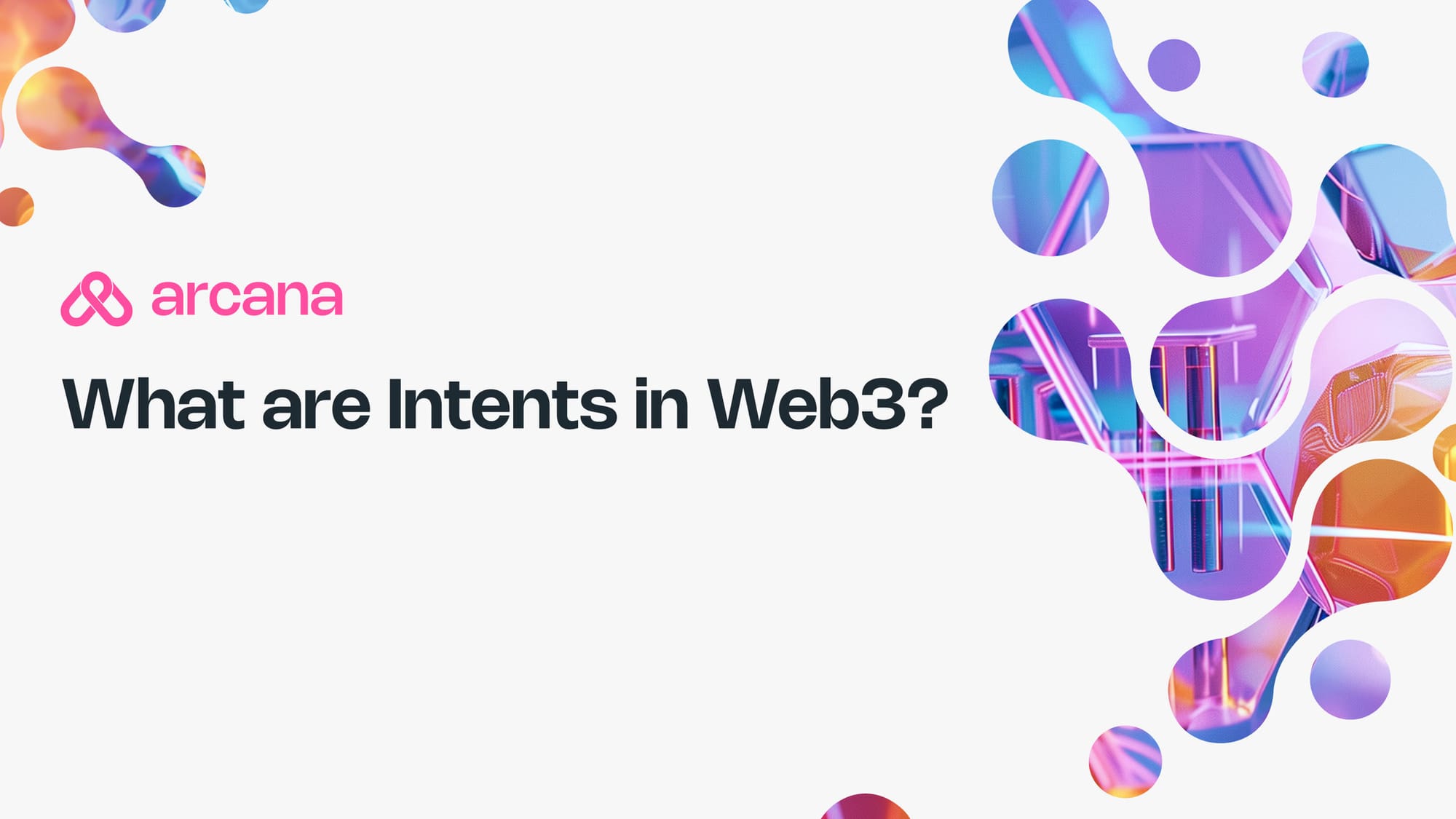Breaking Down Intents In Blockchain
Intents are shaking up the blockchain world, promising to revolutionize how we interact with decentralized systems.

Intents are shaking up the blockchain world, promising to revolutionize how we interact with decentralized systems. They're set to redefine user experience in ways we've only dreamed of.
Think of it like this: driving your car versus having a driver. When you're behind the wheel, you're in charge of every detail. You choose the route, manage your speed, and hunt for parking. It's hands-on, but it can be a hassle.
Now, imagine having a driver. You tell them where you want to go and any special requirements. "Get me to the airport by 9:30, and let's swing by the florist on the way." You don't worry about the nitty-gritty. You just state your goal, and the driver makes it happen.
That's the essence of intents in blockchain. They're a new breed of transaction, but with a twist. Traditional transactions are like giving step-by-step directions. Intents are more like telling your driver your destination and letting them figure out the best way to get there.
In blockchain, transactions are definitive – you spell out precisely what should happen. Intents are declarative – you express what you want to achieve, and the system works out the details.
This shift could make blockchain interactions smoother and more intuitive for everyone, from newbies to seasoned users.
Why Are Intents Important
The explosion of Layer 1 and Layer 2 solutions has created a double-edged sword. More options are great, but they've also made things complicated. Imagine walking into a store for a simple purchase and finding a hundred different checkout lanes. It's overwhelming!
This complexity isn't just annoying; it's risky. Each choice is a potential misstep. Want to move an asset from one chain to another? You're suddenly juggling multiple wallets, swaps, and bridges. Every new option multiplies the possible paths by ten.
For blockchain veterans, this wealth of choices is a playground. They can fine-tune their transactions, optimizing for speed, cost, or value. But newcomers want simplicity. They want to buy, sell, or trade as easily as ordering a pizza online.
That's where intents come in. They're the bridge between the complex world of blockchain and the simple, one-click experience we're used to in Web2. With intent, users can focus on what they want rather than how to achieve it.
How Do Intents Work
Intents are like transactions with a limit order. Let’s say you want to sell ETH and buy USDC. Usually, you’d go to a centralized exchange (CEX) or a decentralized exchange (DEX) like Uniswap. You’d enter how much WETH you want to sell, check the expected USDC value, look at the fees, and then execute the trade.

But in reality, you don’t care about Uniswap. You just want the best deal, i.e., the lowest fees and most USDC. With intent, you can place your order differently. You’d say, “Sell my 1 WETH so I get at least 3200 USDC and keep the fees under 5 GWEI.” That’s your intent—a transaction plus a limit order.
It's like telling a broker, "Get me the best deal." You set the terms, and they handle the rest.
Now, how does this magic happen? To understand its depth, we can use the CAKE framework.
- Application Layer: This captures your intent.
- Permission Layer: This proves the validity of your intent.
- Solver Layer: This finds the best path to achieve your intent.
- Settlement Layer: This is where your intent is executed.

It's a streamlined process. You state what you want, and the system, a group of Smart contracts that act as solvers, makes it happen.
In DeFi, there are also different types of Intent. Here is a breakdown
- Simple Intents: Transaction without limit orders. For example, buy 100 USDC worth of ETH.
- Searcher Intents: Limit order when certain conditions are met. I want to sell a token when gas fees are below a certain threshold.
- Arbitrary Intents: This is a complex limit order with multiple conditions. For example, we can buy USDC by selling ETH, but we must get a certain amount of USDC and do it when the fees are lowest. Also, while it is not being sold, please stake the ETH.
Pros And Cons Of An Intent-Based System
Intents in blockchain are a game-changer, but like any new technology, they have advantages and challenges. Let's break down the pros and cons to understand better what we deal with.

Conclusion
Intents are reshaping blockchain interaction. They simplify complex processes, making crypto more accessible to the masses. It's a step towards true chain abstraction, where users focus on what they want, not how to get it.
To checkout an early implementation of Intents, checkout the team at CoW DAO. Folks at CoW DAO are using Intents to get their users the desired results. Instead of signing a raw transaction, users can sign a “Intent to trade” message that has various users decided parameters. Read more about real world impletementation of CoW DAO here.
Intents could be the key to scaling Web3 to billions. They bridge the gap between blockchain's power and the user-friendly interfaces we're used to. It's about making crypto as easy as sending an email or buying a book online.
This is more than just an improvement. It's a necessary evolution. For blockchain to reach its potential, it must be accessible to everyone, not just tech-savvy enthusiasts.
Ultimately, intents could be the catalyst that propels Web3 into the mainstream, turning blockchain from a niche technology into a global utility. The potential is vast, and the journey has just begun.
About Arcana Network
Arcana Network is building a modular L1 to power Chain Abstraction and intents, helping developers significantly improve user experience in Web3. Since 2021, we've introduced three groundbreaking products.
First up is Auth SDK, a decentralized social login to generate non-custodial Wallets. It is the fastest social login in web3, with a sub-3-second login time, and is free of cost. Games and consumer apps widely use auth SDK to simplify web3 user onboarding. Get a secure, in-app wallet, instantly, with no passwords or installations needed.
Next, Arcana Gasless is based on ERC-4337 Account Abstraction and enables developers to sponsor gas fees for users.
Our third product, SendIt, is a consumer app that redefines crypto payments by allowing users to send crypto to an email address, making transactions effortless and inclusive. SendIt has partnered with BNB and OKX.
Arcana has raised $4.5M from 40+ leading investors including Balaji S, Founders of Polygon, John Lilic, Santiago Roel, and funds like Woodstock, Republic, Fenbushi, Polygon ventures, DCG, and others.
Official Links: Website | Telegram | Twitter | GitHub | Discord

